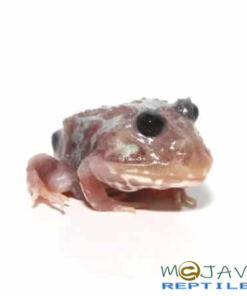Discover Unmatched Charm: Rain Frog for Sale Waits For to Improve Your Life!
Discover Unmatched Charm: Rain Frog for Sale Waits For to Improve Your Life!
Blog Article
The Very Best Reptile Enclosures: Just How to Develop the Suitable Habitat
Creating the best environment for reptiles is not practically positioning them in a tank or room; it involves a thoughtful consideration of various factors that add to their total well-being. From the size of the room to the kind of substratum utilized, every aspect plays an essential role in providing an environment where your reptile can thrive. By recognizing the particular demands of your reptile varieties and carrying out the best habitat arrangement, you can ensure their health and wellness and happiness in captivity.
Picking the Right Room Size
When selecting an unit dimension for reptiles, it is critical to consider their all-natural habits and area needs to guarantee their wellness and health. Various reptile species have differing requirements when it comes to environment area. Arboreal species like chameleons or tree serpents call for vertical space for climbing up and perching, while terrestrial types such as bearded dragons or leopard geckos require more flooring space for exploring and thermoregulation. Marine turtles like red-eared sliders necessitate units with both water and acreage for swimming and basking.
A general guideline of thumb is to provide sufficient space for the reptile to show all-natural actions, such as basking, concealing, climbing, and foraging. By thoroughly thinking about the certain demands of the reptile varieties in concern, owners can produce an appropriate and enhancing habitat that promotes general wellness and motivates natural behaviors.
Establishing Proper Home Heating Components
To make sure the health and health and wellness of reptiles in their enclosures, it is necessary to carefully establish up appropriate burner. Reptiles are ectothermic animals, indicating they rely upon external warmth resources to control their body temperature. When establishing burner in a reptile enclosure, it is critical to take into consideration the certain temperature needs of the varieties you are looking after. Various reptiles have varying temperature level requires based on their natural habitat, so it is important to study and comprehend these requirements.
One effective and typical burner for reptile units is a warm light or ceramic warm emitter. These warmth sources can be made use of to create a temperature level gradient within the unit, allowing reptiles to relocate in between warmer and cooler areas as needed. In addition, under-tank heating pads or warmth mats can be made use of to offer stubborn belly heat, which is especially advantageous for reptiles that require added warmth to help in food digestion.
Keeping track of the temperature level within the room making use of a thermostat is vital to make sure that the burner are maintaining the appropriate temperature level range for your reptile. On a regular basis check and readjust the home heating components as required to create a healthy and balanced and comfy setting for your scaly close friend.
Choosing Appropriate Illumination Components

Offering the Ideal Substrate
Selecting the ideal substratum is crucial for developing a suitable and comfy setting for reptiles in their enclosures. Some reptiles, such as desert-dwelling species like bearded dragons, grow on substrates like calcium sand or reptile carpeting, while others, like round pythons, prefer coconut husk or aspen bed linen to maintain moisture levels.
Avoid substrates that can create impaction, such as loose substratums like sand or gravel, specifically for reptiles recognized to consume their bed linen. Regularly cleansing and changing the substrate is essential to make sure a tidy and hygienic environment for your reptile.
Decorating for Enrichment and Convenience
Considering the substratum's duty in offering a structure for natural actions and maintaining an appropriate setting, enhancing the reptile enclosure with proper decors is important for both enrichment and convenience. Decors such as branches, rocks, hideouts, and synthetic plants not only develop a much more visually appealing habitat however additionally offer functional purposes. Branches supply climbing up possibilities for arboreal species, while rocks can serve as basking areas for warmth. Hideouts offer shelter and security, reducing tension levels for the reptile. Man-made plants not just enhance the aesthetics yet additionally offer hiding areas and enrichment by allowing the reptile to discover and connect with its setting. When enhancing the unit, it is necessary to think about the reptile's species-specific requirements and behaviors to create a space that advertises physical and mental health. By including a selection of decors that simulate the reptile's natural habitat, owners can ensure their pet's convenience and boost their all-natural impulses, ultimately causing see a better and healthier reptile.
Conclusion

Developing the perfect habitat for reptiles is not simply concerning positioning them in a tank or room; it entails a thoughtful factor to consider of different factors that contribute to their general health.Picking the proper substrate is vital for creating a appropriate and comfy setting for reptiles in their units. Some reptiles, such as desert-dwelling varieties like bearded dragons, thrive on substrates like calcium sand or reptile carpet, while others, like ball pythons, like coconut husk or aspen bed linen to keep moisture degrees.
By including a variety of decors that mimic the reptile's natural environment, proprietors can guarantee their animal's comfort and stimulate their natural reactions, inevitably leading to a better and healthier reptile.
In final thought, producing the suitable environment for reptiles includes choosing the suitable enclosure dimension, home read heating aspects, lighting fixtures, substrate, and decors.
Report this page